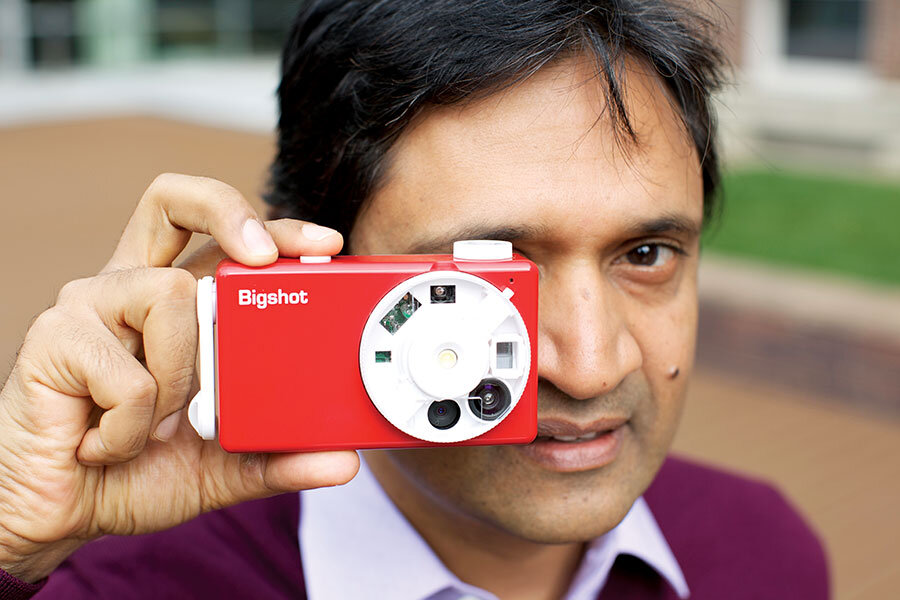A Bigshot with a big goal: Get kids thinking
Loading...
Growing up in India, Shree Nayar spent hours tinkering alongside his father, an engineer, learning to fix things with his hands. He recalls afternoons spent lying under an old Indian car, trying to fix it.
While he worked, he could see his friends playing cricket through the gap between the car and the ground. As the sun faded, so, too, did his chances of playing with them, he said in a TEDx Talk at Columbia University last year.
But looking back, he says those moments of problem solving with his father had a greater impact on him than any formal academic course he’s ever taken. He calls them “immeasurable experiences.”
Now Dr. Nayar, a computer science professor at Columbia, is trying to give today’s children the experience he had. At a time when many gadgets require less hands-on assembly, he has created a build-it-yourself digital camera that actually teaches kids how it works, imparting lessons in both science and art. His invention, Bigshot, is a play on words: By exposing kids to scientific concepts, they can learn to become “big shots.”
Eight years ago Nayar, a specialist in visual technology, began making sketches for a device kids could build themselves. But even as he worked, he questioned himself: Would children really benefit from building their own digital cameras?
He found his answer in “Born Into Brothels,” an award-winning 2004 documentary film about the children of prostitutes in the red-light district of Calcutta, India. In it, photographer Zana Briski gives disposable cameras to children, and they begin to record their surroundings.
“It really transformed the way that they looked at the world,” Nayar says. Despite living in inhumane conditions, they saw their homes and lives in a new light. They learned the power of creativity to give them a voice and help them succeed. Some even went on to pursue careers in photography, he says.
He hopes Bigshot can do the same thing. He works with Hong Kong-based manufacturer Edu Science, which pays him royalties on sales; the camera went on the market last year. Part of the royalties are used to send cameras to underprivileged children around the world.
Bigshot comes as an $89 kit with about 30 parts. Step-by-step instructions on the Bigshot website show how to assemble a working camera. Selected images taken by children are also seen on the website.
The camera can capture three types of images: regular, panoramic, and stereoscopic three-dimensional. A hand crank provides backup power if the battery is low. A section on the website titled “Learn” functions as an interactive textbook that teaches concepts such as power generation, mechanics, optics, and image processing.
“It’s a very humble piece of technology, a very simple piece of technology, but with a very lofty [teaching] goal,” he says.
With Bigshot, kids must take the time and effort to understand how the pieces fit together so that they can achieve their goal, much like the way Nayar worked underneath the car with his father all those years ago.
“There really is nothing else like this camera in terms of its ability to [let us] express ourselves, to communicate with each other, to be creative,” Nayar says. “The idea here was to exploit the appeal of the camera to explain as many different concepts as possible.”
• Learn more at www.bigshotcamera.com.







